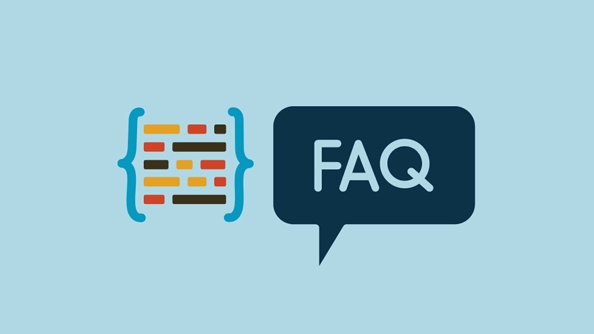If you encounter the "Your PC did not start correctly" loop startup problem, you can try the following steps to solve it: 1. Run the "Start Repair" tool from the recovery environment to automatically repair the startup problem; 2. Enter safe mode to troubleshoot the recent driver or software updates and uninstall or restore the system; 3. Use the command prompt to execute the bootrec and sfc commands to repair system files; 4. Check whether there are bad sectors or hardware failures in the hard disk or SSD, and use chkdsk to scan to repair disk errors. Try one by one in order, and in most cases, you can resume normal startup.

If you're stuck in the "Your PC did not start correctly" loop, you're probably frustrated and just want to get your system back up and running. The good news is that while it looks serious, this issue often has solutions that are within reach — even if you're not a tech expert.

Let's walk through what usually works.
1. Try Startup Repair from Recovery Environment
When Windows can't boot normally, one of the first tools to use is Startup Repair . This built-in utility tries to automatically fix problems preventing Windows from starting.

Here's how to access it:
- Restart your PC a few times during boot (press the power button quickly each time) to trigger the recovery environment.
- After a few attempts, it should take you to the recovery screen where you can choose Troubleshoot > Advanced options > Startup Repair .
It may take a few minutes to run. If it finds issues, let it fix them and then restart.

If it doesn't work the first time, don't panic — sometimes it helps after trying another method first or after multiple attempts.
2. Boot into Safe Mode and Check for Recent Changes
Sometimes, a recent driver or software update causes the system to fail on startup. Booting into Safe Mode lets you troubleshoot without loading all the usual drivers and programs.
To get into Safe Mode:
- From the recovery screen: Troubleshoot > Advanced options > Startup Settings > Restart
- Once it restarts, press number 4 or F4 to enable Safe Mode.
Once inside:
- Uninstall any recent updates (especially graphics or chipset drivers).
- Consider using System Restore if you have a known-good restore point.
This mode strips things down, so it gives you a better chance of pinpointing what went wrong.
3. Use Command Prompt to Repair System Files
Corrupted system files could be the culprit. You can use the Command Prompt in recovery mode to scan and repair these files.
Steps:
- From the recovery screen: Troubleshoot > Advanced options > Command Prompt
- Run these commands one at a time:
-
bootrec /fixmbr -
bootrec /fixboot -
bootrec /rebuildbcd -
sfc /scannow /offr=C:\ /offw=C:\Windows
-
Note: The last command assumes your Windows installation is on the C drive. If not, adjust accordingly.
These commands help rebuild the boot configuration data and repair missing or damaged system files.
4. Check Your Hardware (Especially the Drive)
Sometimes, the problem isn't software at all — it could be your hardware, especially the hard drive or SSD. Bad sectors or failing drives can cause boot issues.
From the recovery Command Prompt, try:
-
chkdsk /f /r— this scans and repairs disk errors.
You'll need to confirm with a "Y" when prompted, then restart.
Also, listen for unusual noises from your drive, or check if it shows up in BIOS/UEFI settings. If the drive is failing, no amount of software fix will help long-term.
Fixing the "PC did not start correctly" loop usually comes down to checking startup files, repairing system components, or rolling back changes. Sometimes, it might require replacing hardware if the drive is faulty.
Give each step a fair shot before moving on, and don't rush through them — most of the time, one of these methods gets things working again.
Basically that's it.
The above is the detailed content of How to fix 'Your PC did not start correctly' loop. For more information, please follow other related articles on the PHP Chinese website!

Hot AI Tools

Undress AI Tool
Undress images for free

Undresser.AI Undress
AI-powered app for creating realistic nude photos

AI Clothes Remover
Online AI tool for removing clothes from photos.

Clothoff.io
AI clothes remover

Video Face Swap
Swap faces in any video effortlessly with our completely free AI face swap tool!

Hot Article

Hot Tools

Notepad++7.3.1
Easy-to-use and free code editor

SublimeText3 Chinese version
Chinese version, very easy to use

Zend Studio 13.0.1
Powerful PHP integrated development environment

Dreamweaver CS6
Visual web development tools

SublimeText3 Mac version
God-level code editing software (SublimeText3)
 How to create a system restore point
Jul 07, 2025 am 12:17 AM
How to create a system restore point
Jul 07, 2025 am 12:17 AM
System restore point setting methods include manual creation, dependency automatic creation, and management of storage space. 1. Manual creation requires system protection to enable in "Create Restore Point", allocate 5% disk space and click "Create" to name the restore point; 2. The system will automatically create restore points when installing updates or changing settings, but do not guarantee comprehensiveness; 3. The restore point occupies no more than 5% of the system disk space by default, and the old version will be automatically cleaned, and storage can be managed by adjusting the upper limit.
 How to turn off wifi on my router remotely
Jul 05, 2025 am 12:28 AM
How to turn off wifi on my router remotely
Jul 05, 2025 am 12:28 AM
If you want to remotely turn off the router Wi-Fi, you must first confirm whether the router supports remote management; if it does not support it, it can be achieved through a smart socket power outage; advanced users can also consider flashing in custom firmware. The specific steps are as follows: 1. Check whether the router has remote management functions, such as the manufacturer's supporting app or cloud management functions; 2. If it is not supported, purchase and set up a smart socket and remotely cut off power through its app; 3. For technical users, you can install firmware such as DD-WRT or OpenWRT to obtain remote control permissions. Different methods have their own advantages and disadvantages. Please weigh them according to your own needs when choosing.
 What is a firewall and how does it work
Jul 08, 2025 am 12:11 AM
What is a firewall and how does it work
Jul 08, 2025 am 12:11 AM
A firewall is a network security system that monitors and controls network traffic through predefined rules to protect computers or networks from unauthorized access. Its core functions include: 1. Check the source, destination address, port and protocol of the data packet; 2. Determine whether to allow connections based on trust; 3. Block suspicious or malicious behavior; 4. Support different types such as packet filtering firewalls, status detection firewalls, application layer firewalls and next-generation firewalls; 5. Users can enable built-in firewalls through operating system settings, such as Windows Security Center or macOS system preferences; 6. The firewall should be used in combination with other security measures such as strong passwords and update software to enhance protection.
 How to fix VIDEO_TDR_FAILURE (nvlddmkm.sys)
Jul 16, 2025 am 12:08 AM
How to fix VIDEO_TDR_FAILURE (nvlddmkm.sys)
Jul 16, 2025 am 12:08 AM
When encountering the blue screen error VIDEO_TDR_FAILURE(nvlddmkm.sys), priority should be given to troubleshooting graphics card driver or hardware problems. 1. Update or rollback the graphics card driver: automatically search and update through the device manager, manually install or roll back to the old stable driver using NVIDIA official website tools; 2. Adjust the TDR mechanism: Modify the TdrDelay value in the registry to extend the system waiting time; 3. Check the graphics card hardware status: monitor the temperature, power supply, interface connection and memory module; 4. Check system interference factors: run sfc/scannow to repair system files, uninstall conflicting software, and try safe mode startup to confirm the root cause of the problem. In most cases, the driver problem is first handled. If it occurs repeatedly, it needs to be further deepened.
 How to stop a program from connecting to the internet
Jul 07, 2025 am 12:12 AM
How to stop a program from connecting to the internet
Jul 07, 2025 am 12:12 AM
To prevent specific programs from being connected to the network can be achieved through system firewalls or third-party tools. 1. Windows users can use their own firewall, create new rules in the "outbound rules" to select the program path and set "block connection"; 2. Third-party tools such as GlassWire or NetBalancer provide graphical interfaces that are more convenient to operate, but pay attention to source reliability and performance impact; 3. Mac users can control networking permissions through the command line with pfctl or using LittleSnitch and other tools; 4. A more thorough way is to use the network outage policy. The whitelisting policy prohibits all programs from being connected to the network by default and only allows trusted programs to access. Although the operation modes of different systems are different, the core logic is consistent, and attention should be paid to the details of the path and scope of the rules taking effect.
 Why do I get a User Account Control (UAC) prompt every time
Jul 13, 2025 am 12:12 AM
Why do I get a User Account Control (UAC) prompt every time
Jul 13, 2025 am 12:12 AM
UAC frequently pops up because the running program requires administrator permissions or the system setting level is too high. Common reasons include installation of software, modifying system settings, running third-party tools and other operation triggers. If using an administrator account, UAC only confirms the operation and not blocks. The methods for reducing prompts include: canceling the program to run as an administrator, lowering the UAC notification level, using a standard user account, and starting the program through the task planner. It is not recommended to turn off UAC completely because it can effectively prevent malicious programs from tampering with the system. You can set the UAC to "notify only when the program changes the computer" to balance security and experience.
 How to change your name on Facebook?
Jul 13, 2025 am 12:03 AM
How to change your name on Facebook?
Jul 13, 2025 am 12:03 AM
The Facebook name change process is simple, but you need to pay attention to the rules. First, log in to the application or web version and go to "Settings and Privacy" > "Settings" > "Personal Information" > "Name", enter a new name, and save it; secondly, you must use your real name, it cannot be modified frequently within 60 days, it cannot contain special characters or numbers, and it cannot be impersonated by others, and the review does not pass the auxiliary verification such as uploading ID cards; it usually takes effect within a few minutes to 3 working days after submission; finally, the name change will not notify friends, the homepage name will be updated simultaneously, and the old name will still be displayed in the history record.
 How to update wifi router firmware
Jul 05, 2025 am 12:24 AM
How to update wifi router firmware
Jul 05, 2025 am 12:24 AM
Updating the wireless router firmware is necessary and easy to operate. 1. Updates can fix vulnerabilities, improve performance, and add functions; 2. Check and updates can be manually operated through the management interface; 3. During updates, you need to ensure stable power supply, use wired connections, avoid interruptions, and confirm model matching; 4. Some brands support automatic updates, and update once or twice a year.





